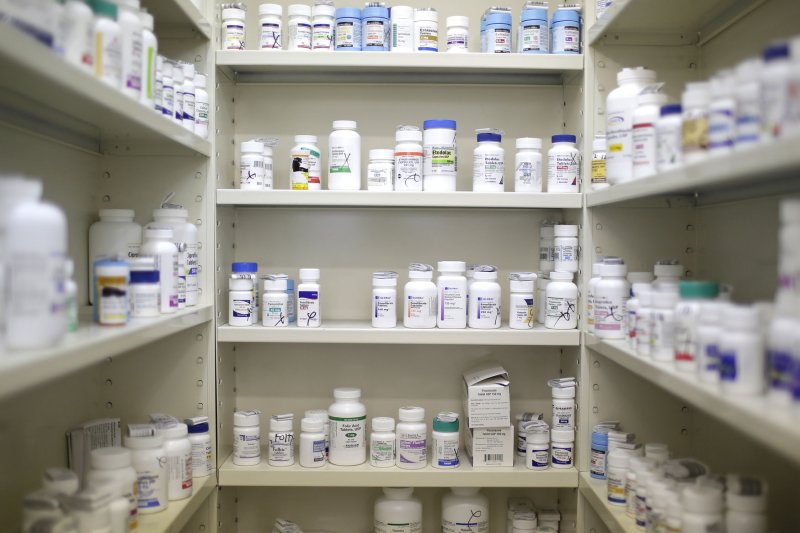A new study has found that statin side effects can be a predictor of patients meeting their cholesterol targets. Photo by John Angelillo/UPI |
License Photo
Feb. 15 (UPI) -- Researchers have found that side effects from statins make it harder for people to meet low-density lipoprotein, or LDL, cholesterol targets.
Other predictors for not meeting LDL cholesterol targets were statin non-adherence and use of weaker statins.
"The beneficial effect of reducing LDL cholesterol on slowing the progression of coronary heart disease is overwhelmingly documented today in epidemiologic and randomized uncontrolled studies," Dr. John Munkhaugen, a cardiology trainee, post-doctoral researcher at Drammen Hospital in Norway and lead author of the study, said in a press release. "European guidelines recommend a blood LDL cholesterol goal of less than 1.8 mmol/l but just one in five cardiac patients taking lipid-lowering drugs achieve this."
The study followed 1,095 patients who were hospitalized with an initial or recurrent coronary event or treatment such as heart attack, coronary artery bypass graft or coronary stent. Patient data was collected from medical records, questionnaires, clinical examinations and blood samples during the hospital stay and at follow-ups between two to 36 months.
Results showed that 57 percent of patients at follow-up were not meeting the LDL target. Researchers found that patients with side effects such as muscle pain or who did not take their statins were more than three times more likely to miss the cholesterol target than patients without side effects.
The study also found that patients prescribed moderate or low-intensity statins were 62 percent more likely to miss the target than patients prescribed high-intensity statins.
"We found the same three reasons for not meeting the target when LDL was analyzed as a dichotomous or continous variable which confirms the strength of the associations," Munkhaugen said. "Surprisingly, low socioeconomic status and psychosocial factors did not predict failure to control LDL cholesterol. The findings show that the focus for interventions to improve LDL cholesterol control are statin side effects, and adherence to and prescription of sufficiently potent statins."
The study was published in the European Journal of Preventive Cardiology.















